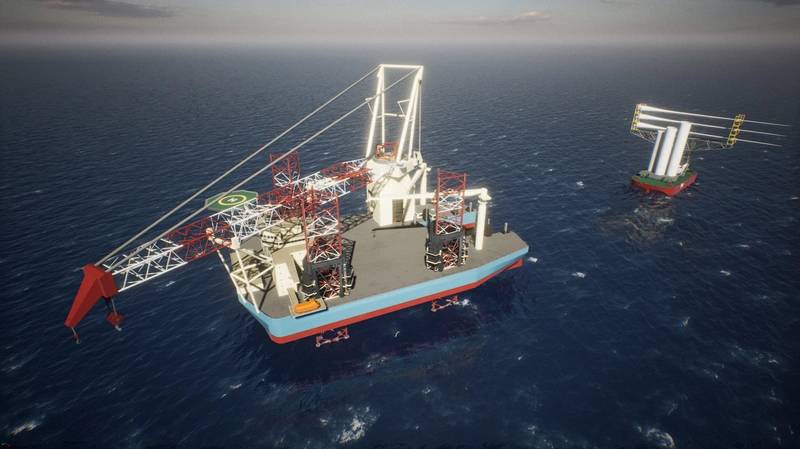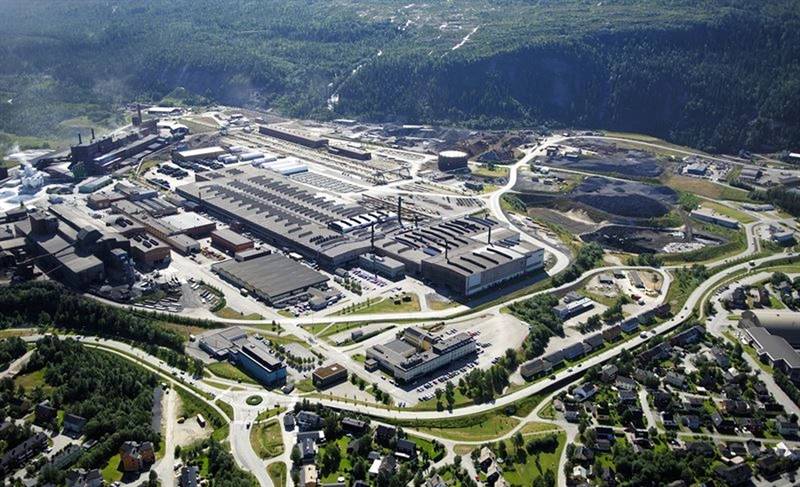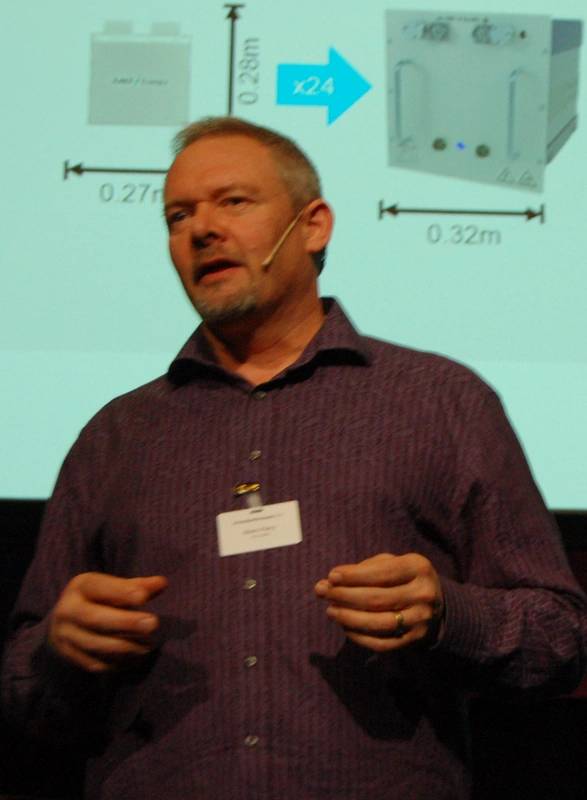Battery-Electric Surge: ESS Scales Up in Maritime
Ask the right government department in any G7 state and you’ll find funding to put battery power for your vessel. Beyond funds, new battery makers and system integrators are ironing out safety issues, and a growing number of giga-sized cell factories offer hope that costs will fall for marine energy storage, as ESS choice grows. Efforts are also underway to recycle rare earth elements and to augment or greenify staggeringly high plant electricity inputs.
Apart from funding, the drivers of change include constraints on shipping in Emissions Free Areas like the fjords of Norway, German ports, the EU’s Climate Agenda, the UN’s climate protocols and IMO rules!
In that mix are the grid operators of wind parks insisting on clean-sailing for service vessels, including, for some, a fuel cell to convert air and hydrogen into propulsive and hotel power or to recharge batteries. In the mix, too, is a brand-new ESS supply chain. When this writer wrote of Siemens robots assembling marine batteries in Norway (three years ago), battery-management software (BMS); the cells and module stacks, drives and electrical switching seemed apart from each other. Today, cell makers either have their own or a vendor’s BMS, and integrators a choice of ESS.
“Heat” issues
The BMS is key, as the whole, emerging sector behind marine ESS still wrestles with the causes of perplexing battery fires, or thermal runaway (TR). A battery’s own electro-magnetic interference, or EMI, might be a cause and, if so, then BMS offers some hope of total control while itself having to be immune to EMI.
If cell chemistry is to blame, then BMS might not be enough since, as one expert wrote, “each particle of active material is unique” and might not be totally controllable. So, more stable cell chemistries — the “next-generation”, semi-solid Lithium-Ion cells — offer stability gains over earlier, less viscous chemistries.
While, captaining a battery-powered vessel requires the safe BMS control software, there are, again, different types. An ABB source tells us that many of their battery suppliers have developed their own BMS, and confirms that “This is because each system must be tailored to the Li-I cells used in the system, as well as the specificity of Marine Classes.” BMS tech and each supplier’s software will affect battery control and safety, the ABB source says, adding that “(only some battery) suppliers are working on a preventative detection method to avoid thermal runaway.” Yet, “Each cell (or pair of cells) must be monitored for voltage and temperature, so if the system detects a rise in temperature with some changes in voltage, with the help of a proper software detection algorithm, the battery string in question can be “isolated”. If done early enough you can prevent the TR.”
Shift Clean Energy
The man behind many of the world’s first lunges for marine ESS still advises cell-maker hopefuls on two continents. After founding Corvus and PBES, Brent Perry now helms Shift Clean Energy, a company taking an integrative approach to battery-stack-making with in-house BMS software for its patented Shift hardware and the knowhow to have predicted the TR fires and explosions associated with air-cooled batteries and seen aboard ferries, car and cargo carriers.
Shift adds its Lithium NMC principal chemistry and BMS to the existing standard of venting for temperature and toxins-shedding. Shift has its own cell-barrier design for stacked cells. The Shift answer to TR is to run coolant around each cell.
“Our liquid cooling system is patented and delivers the most effective cooling available on the market today,” he says, adding that “It delivers fire protection at the cell level, as well as fire detection at the cell level.” The result is “laboratory-like control” of cell temperatures and ideal lifetime
cell performance.
Perry had once cautioned that lab-like control via close-in cell cooling was necessary, or else TR could set in. His words have been heeded, in part, and recent safety incidents and reports out of Norway have vindicated the Shift tech. For ship owners, the Shift advantage is safety and a range of energy densities and high-quality cells designed for continuous use. The company’s own Cellular Compression Technology offers “the lowest ageing values in the industry”, or a system of cells that decay “up to 20 percent” less than standard cells.
 Marine battery client: the look of a Maersk Supply Service wind installation vessel. Image courtesy Maersk Supply Service
Marine battery client: the look of a Maersk Supply Service wind installation vessel. Image courtesy Maersk Supply Service
Interference
The EMI generated by the battery system will also interfere with other components, our ABB source says. It will affect all equipment connected to it. EMI testing needs to ensure that the battery’s EMI emissions are within limits.
All ABB equipment aboard battery-powered ships will work with battery systems that have passed the DNV-CG-0339-2021 tests for electromagnetic compatibility. For an ESS supplier, this ought to be key to acceptance with just about all systems integrators and owners. Shift is understood to have this plus the TR certification IEC 62619:2017 from its days as SPBES. “Our product offers significantly longer life, a battery system that cannot produce a fire (due to built-in detection and prevention).”
Shift adds to that its OnWatch energy management system, a bespoke integration of ESS and ship that manages the battery and its cells’ voltage, temperature, charge and discharge without pause, including at delivery, where “it’s the only system we found to have all power terminals on when running but no voltage or power at the module level during delivery, installation and service”.
Space and weight
You can’t have batteries without onboard space, says Fiskerstrand business development boss, Gustav Johan Nydal. The Norwegian ship designer is behind several recent vessel designs, where owners wanted ESS aboard.
“No ship has unlimited space,” says Nydal, a mechanical engineer, before adding that the designer always puts “sufficiently big room for ventilation” aboard their ships. New, containerized solutions work, he says, for high-speed vessels that have little time or opportunity for charging, and little space below deck. “Most of what we have designed have a battery room, with batteries piece-by-piece. Conversions for (containerized batteries) are faster, but apart from that I don’t see any benefit.” Nydal says Fiskerstrand puts “two or three” battery makers on a list for ship owners and their shipyard to decide what battery to install. “Several are good. We have no preference.” As for their weight: “We’re not concerned about weight. That’s only for highspeed vessels,” not the ferries of 10 to 12 knots that Fiskerstrand designs, including a recent order of five for Oslo harbour and three commuter ferries with large battery packs.
Batteries are best for short distances, where there’s enough power to charge batteries when the ship is quayside. “We’ve sort of set a limit. If the sail distance exceeds 45 minutes to an hour, then the battery size will likely be so big that you should consider other sources.”
Perry admits that while the Shift system offers “weight-space savings in power-energy applications” the Shift batt-stacks “tend to be on par or slightly heavier than our competitors, at least until early 2023, when we will deliver a battery that is about 15 percent lighter than our current offering.”
Britishvolt’s EASy claim
Another cell and battery “stack” maker is Germany’s EAS which, after a merger this summer with UK-based Britishvolt, will continue to offer a tested ESS for a range of vessel types.
Britishvolt has attracted at least one marine industry investor (Scorpio) and will target a “next-generation” UK-derived marine ESS. However, EAS products will likely be the Britishvolt marine offering for some time to come.
EAS’s trademark EASy Marine battery is somewhat modular, if cylindrical, with its roundness touted for being able to fill dead space where a classic rack system would need dedicated space. “It is therefore particularly well suited for refits,” says EAS managing director, Michael Deumeyer. He claims the EAS solution offers “the highest power per volume on the market”.
Like Shift, EAS has its own “safety case” to make, with its exec calling the EASy-Marine tech “safer” than conventional marine batteries. “The combination of the highest safety cell chemistry LFP with the cylindrical cell format is an extremely safe design. It is hardly possible to get into the state of thermal runaway. This would require a high level of abuse.”
He continues: “We are sure that the EAS’ marine solution is the safest graphite-anode-based system on the market. In TR testing, a certification body’s testers reportedly called the resulting TR “the most benign ever experienced”.
“No fire. No flames. And, of course, no propagation from cell to cell,” he adds. It is understood that Britishvolt will use whatever BMS EAS or its vendors have to offer.
EST Floattech
Another provider of marine ESS to the German market is Netherlands-based EST-Floattech. In a year, two sales managers and a project manager in Hamburg have landed battery pack orders for inland waterways vessels, government pilots and “the first of several” upcoming orders from a Southeast Asian offshore wind vessels operator.
The grown client list affirms a claimed safety track record, and sales manager Josefin Lindt confirms, “The diverse funding options for sustainable propulsion systems from the EU and German federal and state governments stimulate ship owners to choose for hybrid or zero-emission newbuilds.”
Like Shift, EST-Floattech have an in-house developed BMS software integrated “to assure safe delivery and charging of power”. This writer failed to determine how it does that, whether by monitoring and controlling anodes and cathodes or by other means. However, 10 years of sailings on EST Floattech batteries attests to a level of reliability. Their proven battery module, Green Orca 1050, is certified by “Hanseatic” class standard bearer, DNV.
 Giga-battery factories: Britishvolt’s above and Freyer below. Image courtesy Britishvolt
Giga-battery factories: Britishvolt’s above and Freyer below. Image courtesy Britishvolt
 Image courtesy Freyer Battery
Image courtesy Freyer Battery
Freyer Battery
We looked at Shift to show how far battery makers may have to go to become “integrated” enough to be sure about safety.
Norwegian-American “newcomer,” Freyer Battery, may not be out to “integrate”, but it is out after scale, with a whirlwind build-up to gigawatt size, at least on paper. The newly formed but rapidly grown entity has hurriedly hired in Japanese car-industry battery gurus — Freyer mainly aims to serve the auto industry — and has struck supply agreements with suppliers and potential clients. The future form of its marine offering can only be guessed at, but its build-up to battery production is noteworthy for being in lockstep with Britishvolt and, in Sweden, with Northvolt, as well as a pact with Maersk to test “end-to-end logistics” solutions.
Like Shift, Freyer has secured deals for future supplies of lithium and cobalt cells from Asia (Japan), although a US JV with 24M will target 50 GWh of batteries in “various sizes and chemistries”, said its CEO, Tom Jensen, who aims to produce high-energy-density lithium cells. Mineral supply deals with mining outfits Glencore (Britishvolt for cobalt), Elkem (Freyer for anode active materials) and Indonesian VKTR suggest chemistries — and therefore BMSs — could change.
Gigawatt plant
Ship owners might also need to show their batteries are “largely” recycled. In Norway and Britain, at least, it has been decided that the miner knows best how to dispose of used mineral elements.
As climate rules tighten, zero-emissions battery production could become a thing. If it does, Freyer’s super sales advantage will be batteries produced in pristine Mo i Rana using hydropower. That’s no small achievement for a giga-factory hoping to produce 25 GWh a year in installable power and then from a 2-phase, 32 GWh giga-factory. Jensen said at a Pareto webinar in January that global battery demand would reach 5,300 GWh (mostly vehicles) by 2030, with some 670 GWh in ESS demand. Freyer targets 43 GWh of cell production by 2025 and 83 GWh by 2028. “We believe demand will outstrip supply by 2025,” he said.
Freyer’s Mo township will have to provide 200 to 3,000 GWh a year of electricity to power a first battery plant. Similarly burdened, Britishvolt’s Gigaplant 1 in the Welsh highlands, and No. 2, in The Midlands, will use solar panels to augment the staggering amount of electricity battery supremacy will require.
They’ll also be trying to outdo Freyer Battery’s 0 kg per KWh by driving “embedded carbon out of the supply chain” at its Indonesian supplier, BV. “It is BV’s aim to get the carbon content of its battery production to 25kg/KWh from a global average of 93kg/KWh. Freyer, meanwhile, will market their cells as “the world’s most environmentally friendly” batteries.
Who’s in what
Existing ESS makers, system integrators, yards and electric drive makers that can integrate batteries are picking up customers in all segments.
EST-Floattech has its new OCTOPUS series of batteries nearly ready for deployment to expand from its base of 200 “workboats and submersibles” to “river cruisers and platform service vessels”. They’ll require system integrators to make new installs safe and optimized. Their modules are serviced from the front and said to be easy to control. EST-Floattech packs “are easily extracted” for servicing.
While several ESS makers claim peak-shaving perks — power returned to or delivered from the battery when needed — hybrid-electric drive train makers make it work. Electric drive integrator, Danfoss Editron, is busy in July 2022 with an order for a 24-meter, French government buoy-laying vessel with two electric motors powered by 150 kWh batteries. Danfoss Editron, too, controls its system with “sophisticated software”. So, the electric drive makers, too, have their IP in-house and have to consider EMI.
Yard as integrator
Then there are the yards with “electro” prowess, like VARD Elektro, who install battery power. A look at their order book reveals batteries installed in several segments, including an autonomous vessel where ESS would have to be extra reliable. VARD jobs are reminder that battery systems charge on DC power and are controlled by DC controls.
It may be on ferries — the large European Ropax ferries — where hybrid ESS might be best suited. The battery packs — as Fiskarstrand’s Nydal says — have to be oversized, but Stena’s three RoRo ferries ordered this summer will, at 11.5 MWh, be the largest propulsion systems and hybrid vessels ever seen. The new Leclanche Navius MRS-3 ESS will be aboard, with Wartsila claiming they offer size and weight advantages and many of the paragon characteristics described above: BMS for every module; water-cooled. The Navius 3 will ship in 2023 and will also be aboard Scandlines’ 10MWh PR24 zero-emission freight ferry.
No application ceiling
The size of vessels sporting ESS has only gotten larger. Oil rigs? Check. Maersk has done that and now intend to put them on a wind installation vessel (see next issue). Boskalis is retrofitting offshore vessels to battery for hotel power and standby modes. The first oil tanker (Asahi Tanker) with an ESS onboard has already bunkered-up a MOL car carrier
Tugs, eco-product tankers, car carriers, high-speed ferries with people and cars aboard … nothing can stop electrochemical innovation — except repeat, fast-spreading fires aboard vessels reported, now, nearly everywhere.
“If the industry does not learn, eventually they will not be able to offer a solution. The regulations are only going to get stiffer. Battery suppliers cannot survive if they hope third party systems will ensure the safety of their products. That is the responsibility of the battery suppliers if they expect to be long term partners to the industry.”
 After founding Corvus and PBES, Brent Perry now helms Shift Clean Energy, a company taking an integrative approach to battery-stack-making with in-house BMS software for its patented Shift hardware. Photo Credit William Stoichevski
After founding Corvus and PBES, Brent Perry now helms Shift Clean Energy, a company taking an integrative approach to battery-stack-making with in-house BMS software for its patented Shift hardware. Photo Credit William Stoichevski








